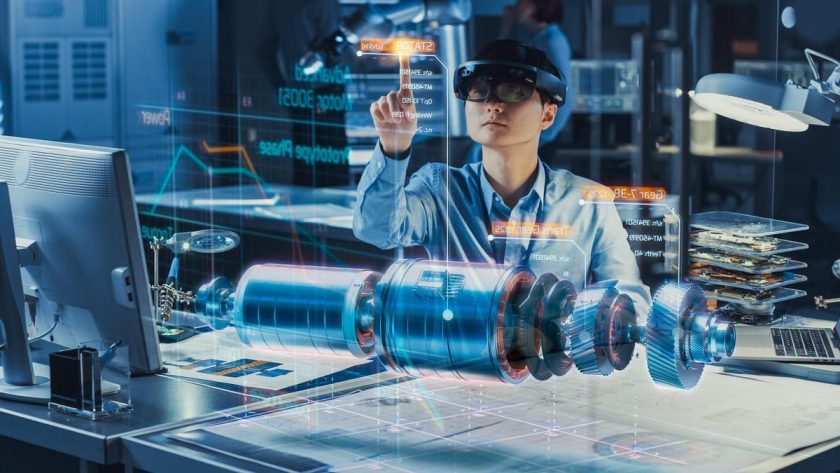Future of VR (Virtual Reality) and Its Impact

Virtual reality is a technology that allows us to see into the virtual world, to see it in full virtual vision by using the gadget called VR Google, also called Oculus Rift. Virtual reality has been a pretty big and probably influential technology to this day, and many people, both gamers, and tech enthusiasts have been expecting great things from VR technology and its future direction.
In 2022, Facebook creator, Mark Zuckerberg has been promoting a lot on Virtual reality technology and even has been encompassing the newer concept of interconnected VR, the Metaverse. The concept of Metaverse is that it is the virtual universe that is structured around VR technology, to let people live, communicate, play, and even have their property in the online virtual reality platform.
This idea has become quite popular among many tech enthusiasts, especially those who are looking forward to the future of Virtual reality, but the idea has become quite died out in the last few months, due to the lack of advancement in technology, and the VR technology itself has deemed unready for the stage as ambitious as the metaverse.
But, how this will leave us now, how this will affect the impact of VR, how will the future of Virtual reality, and what its impact on the current and probably future technology, so this is what we are going to discuss in our article here.
What Is Considered VR (Virtual Reality?)
First, let us see the basics of Virtual technology, what is considered VR, and how Virtual reality could work. Sometimes. This way, we can understand more about the future direction of VR, how it would impact the application of future technology, and to understand whether, the Metaverse, a universe comprised of future Virtual technology could work.
To put it in simple terms, Virtual reality is a computer technology that can generate objects, scenes, and video visuals that appear as real as possible to the receiver, making the user of the VR gadget itself fully immersed in their VR surroundings. This is the basic premise of technology, but sometimes, full immersion in the VR itself is quite hard to achieve.
The thing is, full immersion would require full bodily sense to be immersed into the world of virtual, be its vision, hearing, sense of smell, or touch. To this day, the technology of VR is only limited to the sense of hearing and visuals, while it ignores or is probably impossible to immense on the sense of smell and touch, but we may never know what the future might bring us, and the prospect of VR is interesting to watch, and follow.
Augmented Reality vs Virtual Reality
Sometimes you have heard about Augmented reality or AR, a technology that is quite similar to VR itself, and sometimes people might get confused between the two of them. On their principles, they are a technology that let its user immerse in the virtual world, but the differences between Augmented and virtual sometimes lie in how the technology immerses in the sense of their users.
So, to make sure you understand more about the technology between these two, here are a few differences between each of them.
The Difference of VR and AR
The main difference between the technology is that Virtual reality builds the world by utilizing specific technology from the headset. This headset or sometimes called an oculus rift, emulates a sense of vision and hearing, enabling people to immerse in the virtual world. By all means, VR constructs its virtual world through images, videos, and sounds.
As for Augmented reality, the world itself becomes the media for the virtual framework, shaping platform, and the augmented reality itself. Augmented reality turns our world into a virtual platform, the example of Augmented reality examples are games like Pokemon Go or QR codes that enable people to scan the provided QR links, more on the QR codes later.
The Mixed Reality
There is also a mixed reality platform, a hybrid technology that allows for both virtual, and augmented reality, and letting for more complex and immersing world-building. An example of Mixed reality, is sometimes like when we can see virtual objects that are in the real world, and build any experiences within the physical as well as digital platforms that are both practically indistinguishable.
The Application Of The Current Virtual Reality
Virtual reality itself was commonly implemented as games and entertainment, such as with the VR Google, and VR games that have become quite popular to this day. However, the application of Virtual reality itself isn’t limited to entertainment and games, as there is several application that many sectors of industries could benefit from the virtual reality technology.
Here is a few application of the current virtual reality technology:
- Entertainment industries – It is the most common use for virtual technology, which allows people to immerse in their virtual world, letting people enjoy virtual movies, video game play, and practicing extreme sports in the comfort of the sofa at their home.
- Media and journalism – It will let journalism and news reporting have brand new immersive platforms that they can use to report, let people know where events have occurred, letting people stream and see it in real-time.
- More immersed communication – For communication, the VR let people have a more immersed, communicative, and active way of communication, as such it has a high potential for the communication parts.
- Educational sector – Virtual reality could be one of the most fun, and interesting ways for the teacher to enable the classroom to have brighter, more advanced, and fun activities even inside the classroom. It allows for more media in teaching, helping students to retain knowledge faster and way better than traditional books and pens.
- Medical sector – It allows doctors to meet their patients without even touching, or meeting up, it allows for the virtual reality that allows for doctors to talk directly through their patients. Some new research even shows that the use of VR cure and medicine could even lessen the effects of Parkinson’s disease.
The Predicted Future Development Of VR Tech
Experts in tech, as well as technology enthusiasts, has been predicted that the implementation of the current virtual reality has been very limited, and would probably be the most basic implementation of Virtual reality. This is mostly because of the very limited technology on the Virtual reality platform that we have currently, so the most basic use for VR is mostly on entertainment, as well as video games.
Virtual Reality itself is one of the technologies that has expected the highest growth in the next two years, with one of the highest potential project growth and investment, reaching more than 15 Billion Euros in 2022 alone, and would be increased by a lot in the upcoming years. Technologies, platforms, and the implementation of VR itself have currently undergone very ambitious planning and development.
With a lot of demands, and a growing market, the applications and platforms for VR have been growing well beyond the platform of video games, or entertainment, and even now goes to tourism, marketing, and many more affordable sectors, and interesting implementations of the VR headset itself.
However, virtual reality itself left people wondering, if there will be more technology that allows for VR to have better graphics, a more immersive world, and build even the most realistic virtual world, what would it be for the future of VR technology? Well, we can’t say for sure, as the future development of VR is unpredictable, but we can say one thing, it will be a hell of a ride to watch and see its future VR development.
Current Development of Virtual Reality
As for the current state of Virtual reality, you can see its development on many VR projects, and VR games as its base starter. VR games are one of the most common platforms, and the use of VR gadgets and the development of VR gadgets such as with VR Google is currently ongoing.
Nevertheless, it is very exhilarating to see its development, yet the current state of VR games, let’s just say is still clunky, and awkward. With the current graphical output, Virtual reality is still at least years behind the computer power output and graphical quality itself, hence Virtual reality is more like virtual movies and games, rather than an immersive world like Metaverse Zuckerberg advertised.
One thing that many people has been complained about and mentioned is motion sickness from using prolonged VR headsets, as of today, VR headset has been relying on the VR headsets alone, and would have problems with their motion sickness.
Bottom Line
So, in conclusion, the development of the Virtual reality platform has been one of the most interesting platforms to watch, and see development. We can say, that current VR is bitted janky, and limited to the graphical output of current VR headsets, but we may never know what the future holds, especially with the more advanced graphics, and technologies coming over the year.







0